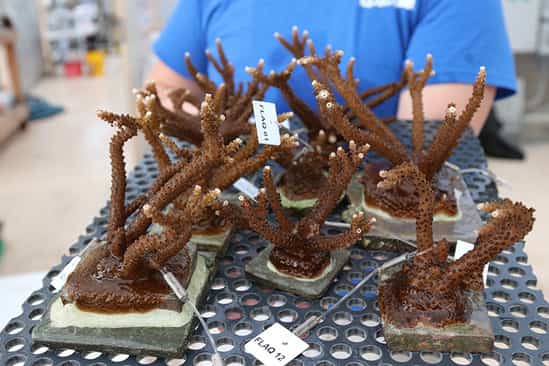Innovate
Florida Aquarium joins effort to restore, preserve Florida coral reefs

The Florida Aquarium in Tampa is one of seven partners working with the National Oceanic and Atmospheric Administration to protect and restore seven coral reef sites in the Florida Keys.
The nearly $100 million project is designed to restore nearly three million square feet of the Florida Reef Tract, about the size of 52 football fields, a news release said.
The Florida Aquarium is working on ways to allow coral to reproduce more frequently. It also has partnered with the University of Florida’s Institute of Food and Agricultural Sciences on a program to spawn and breed long-spined sea urchins, which eat algae that is damaging to coral.
Both will be used in the restoration project, said Amber Whittle, director of conservation at The Florida Aquarium.
“The Florida Aquarium is in a unique position to produce genetically diverse, adaptable corals and long-spined sea urchins to aid in this vital restoration,” Whittle said.
Coral is a big part of the state’s economy and key to activities such as tourism, marine recreation and sport fishing. The Florida Reef Tract has an asset value of about $8.5 billion, according to the Florida Keys National Marine Sanctuary. The fish that grow and live on coral reefs are a significant food source, the sanctuary said.
The coral reefs have been degraded because of hurricanes, disease, high-impact human use and warming ocean temperatures, among other stresses.
The restoration project, dubbed Mission: Iconic Reefs, will focus on seven coral reef sites in the Keys, where the coral cover has been reduced by more than 90 percent. Coral cover is a measure of the proportion of reef surface covered by live stony coral instead of sponges, algae or other organisms. The goal is to restore the reefs so they have 25 percent of coral cover, the amount considered necessary to support a healthy ecosystem and protect the reef structure.
The restoration strategy is essential to the survival of the Florida Reef Tract, Whittle said.
In August, researchers at the aquarium’s Center for Conservation in Apollo Beach used lab-induced techniques to spawn endangered Atlantic pillar coral. It was the first time the technology had been used for Atlantic coral, the aquarium said. The aquarium has been working with London researchers on breeding Pacific coral, as the St. Pete Catalyst reported last year.
The multi-phased Mission: Iconic Reefs is expected to continue through 2035. Phase 1 alone is expected to cost $97 million. Funding is not yet secured and is expected to come through a public-private partnership, said Tom Moore, manager of the NOAA Coral Reef Restoration Program.
In addition to The Florida Aquarium, other partners on the project the state of Florida, Coral Restoration Foundation, Mote Marine Laboratory and Aquarium, The Nature Conservancy, Reef Renewal, and the National Marine Sanctuary Foundation.







